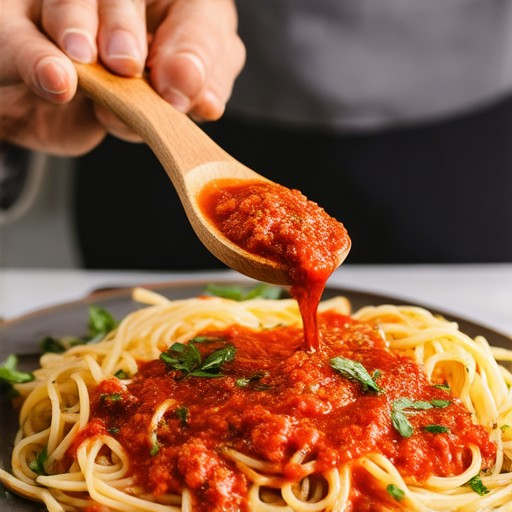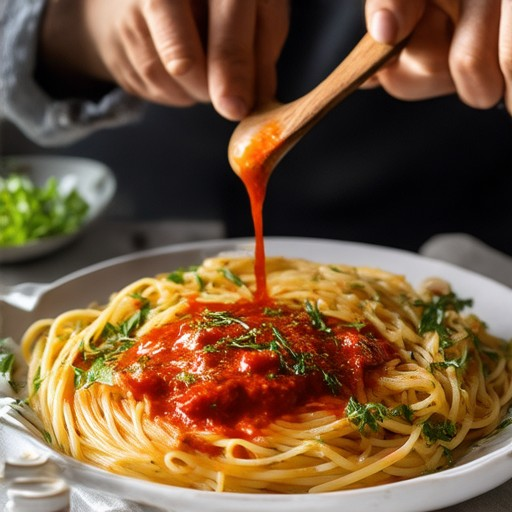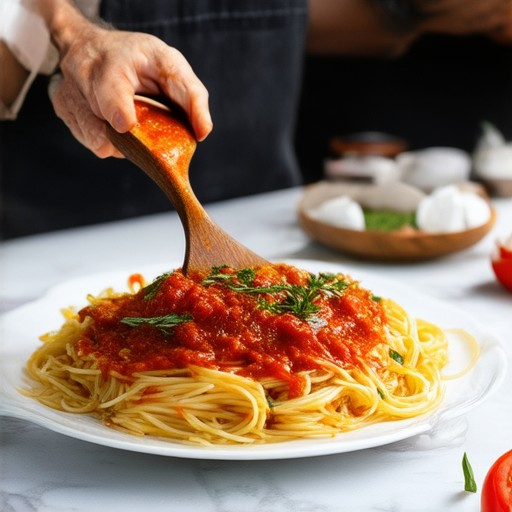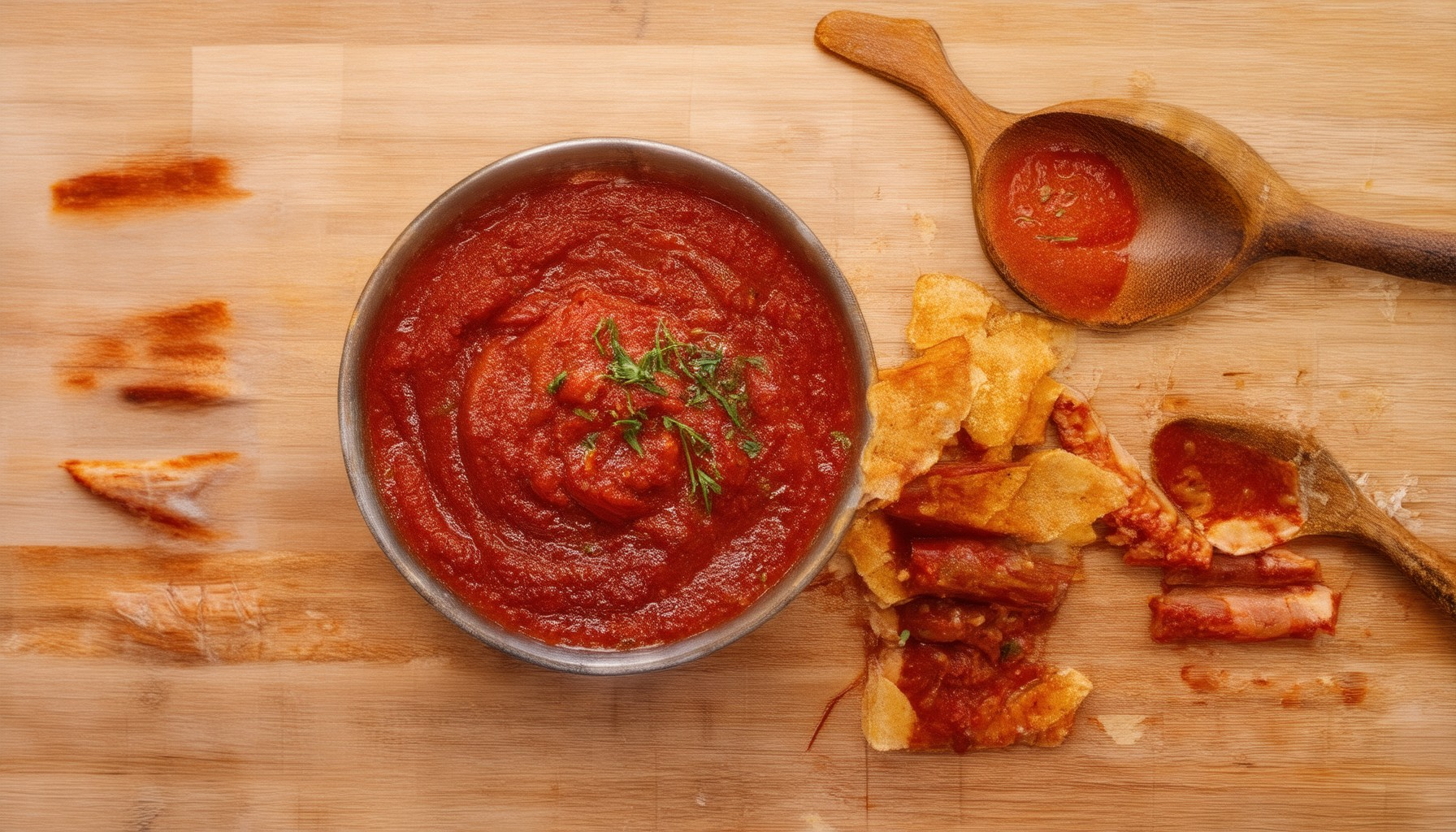Transform your dining experience with the rich and vibrant flavors of homemade sauces. Whether you’re a seasoned chef or just beginning, crafting delicious sauces can elevate your meals to new heights. From the simplicity of tomato-based creations to the luscious creaminess of dairy-based sauces, there’s a perfect homemade sauce for every dish. Discover how to make homemade sauces from fresh tomatoes, explore easy recipes requiring just a handful of ingredients, and learn expert tips to ensure your sauces last longer while maintaining their quality. With a few simple steps and the right ingredients, you’ll be creating culinary masterpieces that rival any restaurant dish. Dive into the world of homemade sauces and unlock a whole new level of flavor for your meals!
Key Takeaways: Enhancing Your Meals with Homemade Sauces
- Diverse Sauce Options: Choose from four types—tomato-based, oil-based, vinegar-based, and cream-based—to suit various dishes. Tomato-based sauces pair well with pasta, while oil-based are ideal for grilled meats. Vinegar-based options work great for marinades or dressings, and cream-based sauces add luxury to seafood or risotto.
- Flavor Development: Allow sauces to simmer to blend flavors effectively. This process enhances taste, especially for tomato and cream-based varieties.
- Ingredient Quality: Use fresh ingredients for better taste and avoid contamination. Sterilize jars if canning to ensure safety.
- Storage Techniques: Store sauces in airtight containers, refrigerate below 40°F, and consider adding acid or oil to extend shelf life. Proper storage prevents spoilage and maintains quality.
- Experimentation: Don’t hesitate to mix herbs and spices creatively. Start with basics and gradually explore unique combinations.
By understanding these points, you can elevate your cooking with homemade sauces, enhancing both meal variety and taste.

How to Make Your Own Sauce at Home
Creating your own sauce at home is a rewarding experience that allows you to customize flavors to suit your taste preferences. Whether you’re aiming for a quick weeknight meal enhancer or a showstopper for special occasions, here’s a step-by-step guide to crafting delicious homemade sauces.
Basic Tomato Sauce
- Ingredients: – 4 large ripe tomatoes, chopped
– 1 onion, finely chopped
– 3 cloves garlic, minced
– 2 tablespoons olive oil
– 1 teaspoon dried oregano
– Salt and pepper to taste
– Optional: 1 tablespoon sugar or balsamic vinegar for acidity - Instructions:
1. In a large pot, heat olive oil over medium heat.
2. Add chopped onion and garlic, sauté until softened.
3. Add chopped tomatoes and stir well.
4. Simmer for about 30 minutes, allowing the tomatoes to break down.
5. Stir in oregano, salt, pepper, and optional sweetener or vinegar.
6. Adjust consistency with water or simmer longer for thickness.
7. Cool and store in an airtight container for up to a week.
Quick Vinaigrette
- Ingredients: – 1/4 cup olive oil
– 1/4 cup white wine vinegar or apple cider vinegar
– 1 teaspoon Dijon mustard
– 1 teaspoon honey or maple syrup
– Salt and pepper to taste
– Optional: Herbs like parsley, chives, or basil - Instructions:
1. Whisk olive oil, vinegar, mustard, and honey in a bowl.
2. Season with salt and pepper.
3. Stir in herbs if using.
4. Use immediately or store in the fridge for up to a week.
BBQ Sauce
- Ingredients: – 1 cup ketchup
– 1/4 cup yellow mustard
– 1/4 cup mayonnaise
– 2 tablespoons Worcestershire sauce
– 1 tablespoon honey or molasses
– 1/4 cup water
– Salt and pepper to taste - Instructions:
1. In a saucepan, combine ketchup, mustard, mayo, Worcestershire, and honey.
2. Stir in water and bring to a gentle boil.
3. Reduce heat and simmer for about 20 minutes to allow flavors to meld.
4. Taste and adjust seasoning.
5. Store in a sealed jar for up to 3 months.
Alfredo Sauce
- Ingredients: – 4 tablespoons unsalted butter
– 1/2 cup heavy cream
– 1/2 cup grated Parmesan cheese
– 1 egg (optional for richness)
– Salt and pepper to taste - Instructions:
1. Melt butter in a saucepan over medium heat.
2. Whisk in cream and cheese until smooth.
3. If using egg, beat it and stir in slowly to thicken.
4. Cook until slightly thickened, about 2-3 minutes.
5. Season with salt and pepper.
6. Serve hot over pasta or as a dipping sauce.
With these recipes, you can start experimenting with different flavors and ingredients to create your own signature sauces. Remember to taste as you go and adjust seasonings according to your preference. Happy cooking!
How Do You Make Easy Sauce?
Creating a simple and delicious sauce can elevate your dishes effortlessly. Here’s a quick recipe for a flavorful sauce that enhances your meals:
-
Quick Garlic Butter Sauce
Ingredients:
- 2 tbsp butter
- 2 cloves garlic, minced
- 1 tsp olive oil
- Salt and pepper to taste
- Optional: Red pepper flakes for spice
Instructions:
- Melt butter in a pan over medium heat.
- Add olive oil and minced garlic, sauté until fragrant (about 1-2 minutes).
- Whisk in salt, pepper, and red pepper flakes (if using) to combine.
- Pour over your favorite pasta, vegetables, or meats. Toss to coat evenly.
Note: This sauce can be customized by adding herbs like parsley or basil, or experimenting with different cheeses for a creamier texture.
For more inspiring recipes and culinary tips, visit our website at memories-restaurant.com .

What Are the 5 BasicSauces?
- Tomato Sauce
- Mayonnaise
- Mustard
- Ketchup
- Soy Sauce
These five basic sauces are essential in culinary applications and form the foundation for countless recipes around the world. Each sauce offers unique flavors and versatility in enhancing dishes:
- Tomato Sauce: Originating from Italy, this sauce is a staple in many cuisines. It is commonly used in pasta dishes, soups, and pizzas. A simple recipe involves blending tomatoes, garlic, olive oil, herbs, and spices.
- Mayonnaise: Hailing from France, this creamy sauce is a favorite for sandwiches, salads, and as a dip. It typically consists of egg yolks, vinegar, oil, and seasonings. Try our classic mayo recipe for a flavorful twist.
- Mustard: Another French classic, mustard adds a spicy kick to meats, cheeses, and sandwiches. Our homemade mustard pairs perfectly with roasted meats and artisanal breads.
- Ketchup: Originally from China, ketchup has become a global favorite. It is perfect for Asian dishes like stir-fries and as a dipping sauce for dumplings. Check out our sweet and tangy ketchup recipe.
- Soy Sauce: Widely used in Japanese and Chinese cuisine, soy sauce is a umami-rich condiment. It works beautifully in stir-fries, dipping sauces, and marinades. Our authentic soy sauce is a must-have for any pantry.

How to Make Homemade Sauces
Making homemade sauces is a fantastic way to elevate your meals and add a personal touch to your cooking. Whether you’re a seasoned chef or just starting out, here’s a guide to crafting delicious sauces from scratch.
Tomato-Based Sauces
Classic tomato sauces are versatile and easy to prepare. Here’s a simple recipe:
- Combine canned tomatoes, fresh basil, garlic, olive oil, salt, and pepper in a pot.
- Simmer for about 30 minutes to allow the flavors to meld.
- Store in sterilized jars for later use or pour over pasta dishes.
Oil-Based Sauces
These sauces are perfect for finishing grilled meats or as a dressing for salads:
- Whisk together olive oil, balsamic vinegar, honey, Dijon mustard, and garlic powder.
- Let the mixture sit for at least 30 minutes to allow the flavors to develop.
- Drizzle over steaks, chicken, or vegetables for a flavorful touch.
Vinegar-Based Sauces
Quick and tangy, these sauces are great for marinades or dressings:
- Mix apple cider vinegar, soy sauce, garlic, ginger, and sesame oil in a bowl.
- Marinate meats or vegetables for at least 30 minutes before cooking.
- Add a zesty kick to sushi rolls or stir-fries.
Cream-Based Sauces
Rich and creamy, these sauces are ideal for pasta or as a dipping sauce:
- Melt butter in a pan, then whisk in heavy cream and parmesan cheese.
- Simmer until slightly thickened, then toss with pasta or vegetables.
- Enjoy as a luxurious addition to risottos or seafood dishes.
Tips for Success
Always use fresh ingredients for the best results. Adjust seasonings to taste and experiment with herbs and spices to create unique flavors. Properly sterilize jars for safe canning and storage.
Explore more recipes and tips on our Recipe Hub for inspiration and step-by-step guides. From classic favorites to innovative creations, we’ve got everything you need to become a sauce master!
What Are the Best Tips for Making Homemade Sauces?
- Start with high-quality ingredients: Use fresh herbs, spices, and vegetables to ensure the best flavor.
- Patience is key: Great sauces require slow cooking to allow flavors to meld perfectly.
- Master the basics: Learn fundamental techniques like sautéing, simmering, and reducing to achieve the desired consistency.
- Season wisely: Taste as you go and adjust seasoning with salt, pepper, and other spices to enhance flavor.
- Consider texture: Use tools like blenders or immersion blenders to create smooth textures for creamy sauces.
- Experiment with heat: Adjust cooking temperatures to bring out unique flavors and depths in your sauces.
- Store properly: Keep sauces in airtight containers in the fridge for up to a week or freeze for later use.
- Pair wisely: Know which sauces complement your dishes best to elevate meals effortlessly.

Extending the Lifespan of Homemade Sauces
Homemade sauces are a delicious addition to meals, but proper storage and care can significantly extend their freshness and longevity. Here are some expert tips to keep your sauces lasting longer:
- Storage Containers: Use an airtight container, preferably glass, to minimize exposure to light and oxygen. Glass is ideal as it doesn’t react with acids or oils.
- Add Acid:** Incorporate a splash of lemon juice or white wine vinegar to lower the pH level, inhibiting bacterial growth.
- Top with Oil: Drizzle a thin layer of neutral oil (like vegetable oil) on the surface to create a protective barrier against oxidation.
- Portion Control: Store smaller amounts in sealed containers to prevent waste and promote longer shelf life.
- Refrigerate: Keep sauces cold (below 40°F or 4°C) to slow bacterial growth. Properly stored sauces can last up to one week in the fridge.
- Fresh Ingredients: Use high-quality, fresh ingredients to begin with. Discard any sauce that shows signs of spoilage, such as off-flavors or discoloration.
- Herbs and Spices: Some herbs and spices may contribute to preservation, though their primary role is usually flavor enhancement rather than extending shelf life.
By following these tips, you can enjoy your homemade sauces longer while maintaining their quality and taste. Remember to always check for freshness before serving!
For more culinary insights and recipe ideas, visit our website . Explore our recipe section for more inspiration and expert tips!





0 Comments